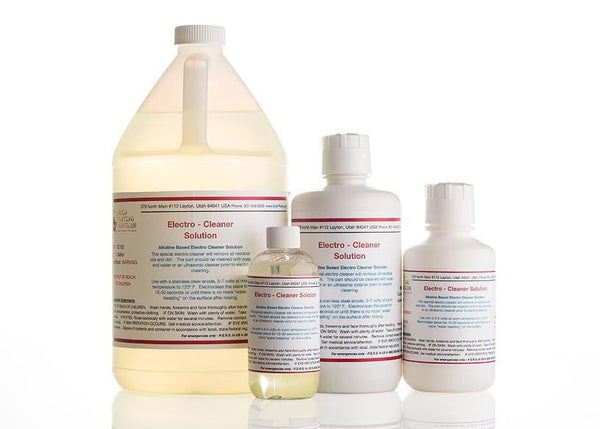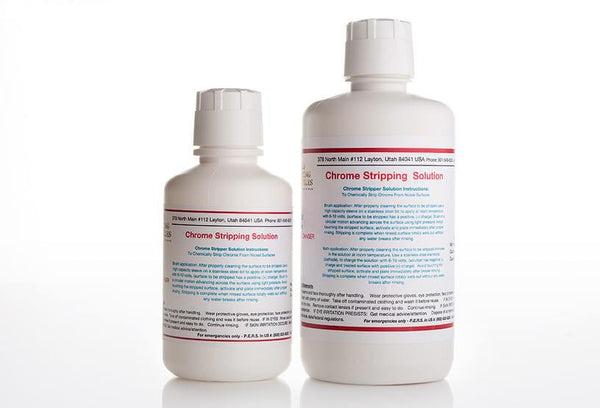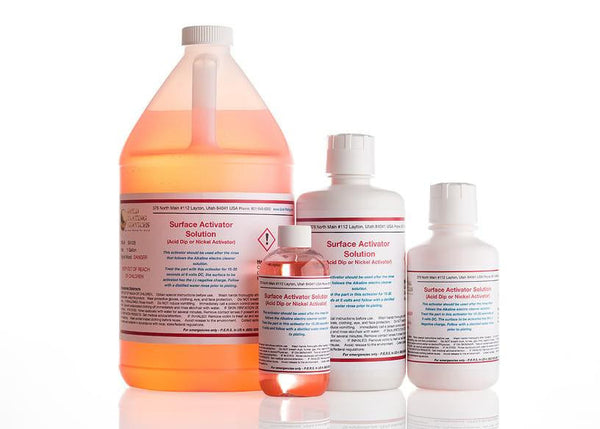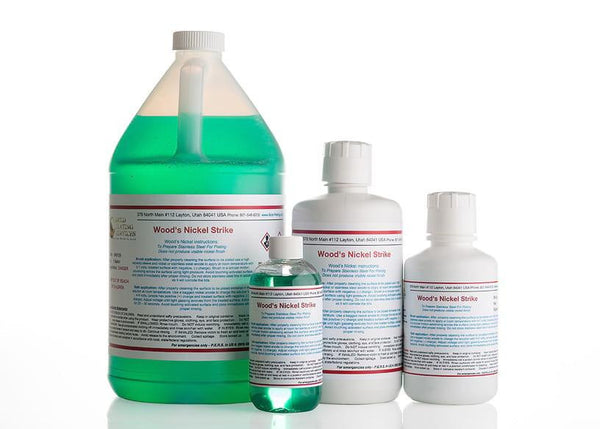Bright Nickel Plating Solution for Bath or Brush Plating
Plating Solutions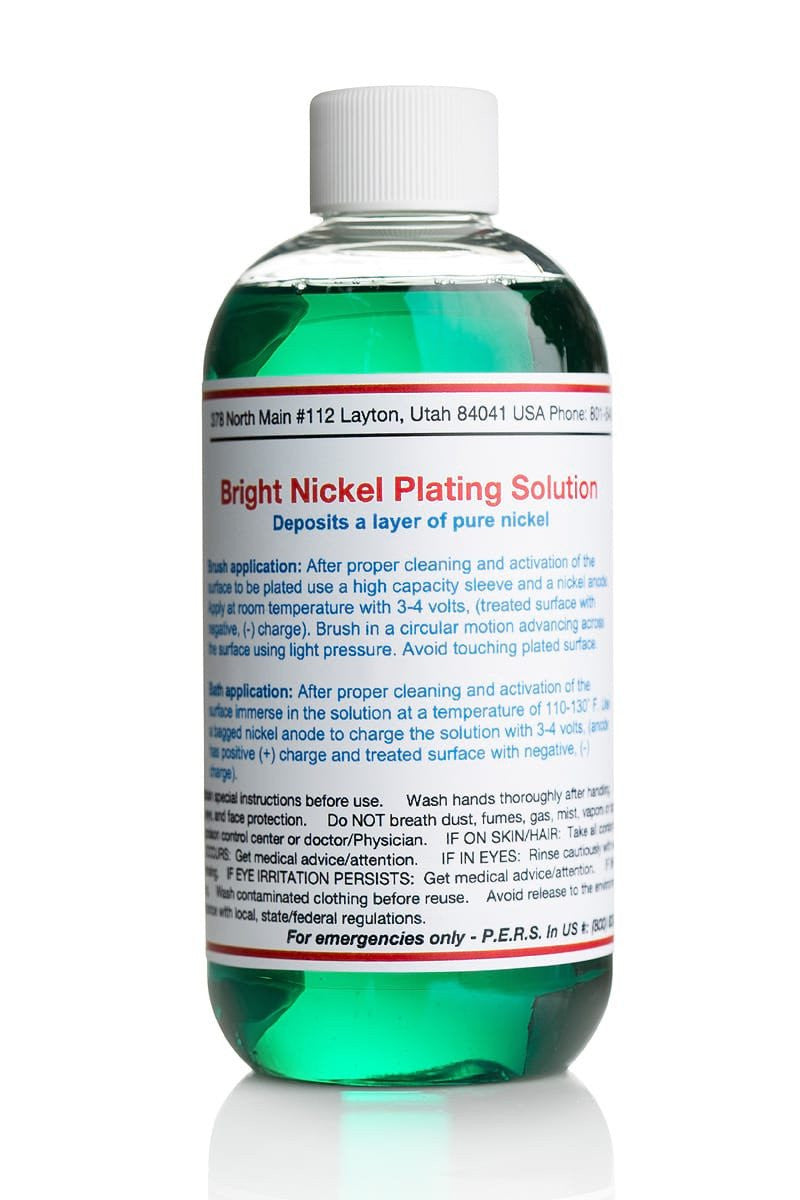





Bright Nickel Plating Solution is an electroplating solution that is designed to plate a hard, bright nickel deposit onto most types of metallic surfaces*. When correctly applied to a properly prepared surface the nickel plate can provide a beautiful, high luster decorative finish by itself. Because of its excellent appearance, hardness, and other physical properties, Bright Nickel Plate is the most common material used as an under plate for subsequent finishes, such as, chrome, gold, rhodium and other types of decorative finishes.
*A few metals such as zinc, stainless steel, and tungsten require special pretreatment before plating with Bright Nickel Plating Solution.
What you will need to use this solution properly:
Our Bright Nickel Solution requires a bagged nickel anode and the proper equipment and supplies to be used. We recommend electroplating equipment such as our Jewel Master, Gold Star, Universal Plater, or the ProLabcm which will have everything you need to perform this important pre-treatment step.
For best results we strongly suggest plating at the proper temperature with agitation. Brush results will not get as bright of a finish as you will with bath plating.
STANDARD OPERATING CONDITIONS
CATHODE CURRENT DENSITY 20-50 Amp/Ft ²
ANODE CURRENT DENSITY 10-30 Amp/Ft ²
VOLTAGE 5-7 volts (small bath)
6-12 volts (Large bath)
TEMPERATURE 135° F - 155° F for best results
Nickel Deposit Rate Click Here
NOTE: At 40 ASF you can achieve 2.5 microns in 3 mins and at 30 ASF you can achieve 2.5 microns in 4 minutes.
NOTE: The Bright Nickel Solution contains a brightener/leveling component that may come out of solution at lower temperatures. This can produce a white or light-colored layer of precipitate at the bottom of the container. If this happens the nickel solution will still perform normally as a brush plating solution. However, if the solution is to be used for bath plating then the leveling component needs to be re-dissolved back into the solution. This can be done by warming the solution to 135° F to 155° F and agitating the solution until the leveling component is dissolved. See video below.

